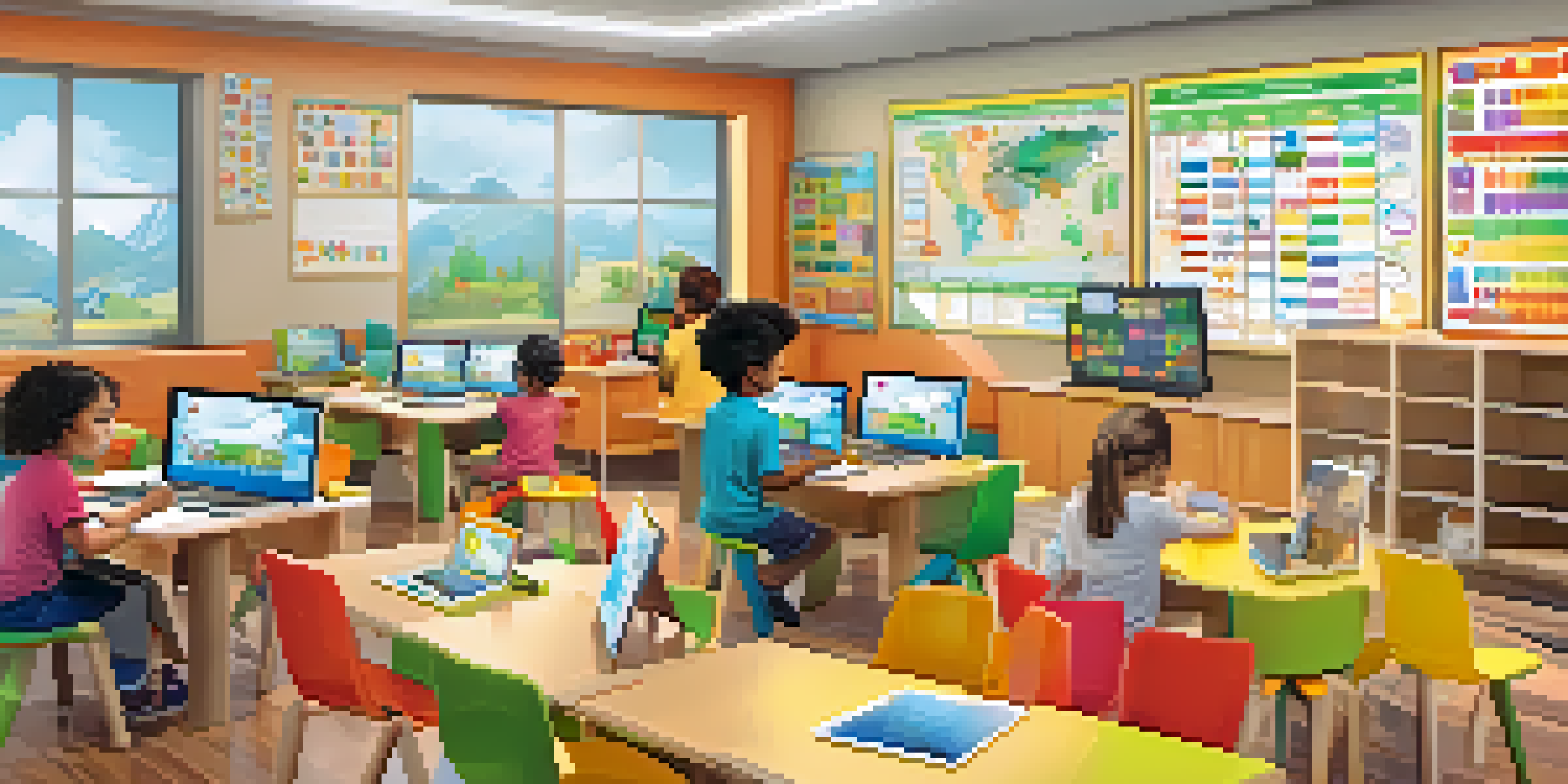Integrating Coding into Early Childhood STEM Education Programs

Why Introduce Coding in Early Childhood Education?
Coding is more than just a tech skill; it's a way to foster critical thinking and problem-solving in young minds. Early exposure to coding concepts helps children develop logical reasoning and creativity, essential skills for their future. As technology continues to permeate every aspect of our lives, understanding coding can empower children to not just consume technology but also create it.
Coding is a valuable skill that empowers individuals to solve problems, think critically, and express their creativity.
Moreover, incorporating coding into early childhood education aligns with the broader goals of STEM (Science, Technology, Engineering, and Mathematics). By integrating coding, educators can create a more engaging curriculum that excites children about learning. This early engagement lays a foundation for more advanced concepts they will encounter in later years.
Additionally, coding encourages collaboration among young learners. Activities often require teamwork, promoting social skills and communication. These interactions are invaluable as children learn to express their ideas, negotiate solutions, and celebrate each other's successes.
Key Benefits of Coding for Young Learners
One of the most significant benefits of introducing coding to young children is the development of critical thinking skills. When children learn to code, they learn to break down complex problems into smaller, manageable parts. This deconstruction process can be applied beyond coding, aiding in everyday problem-solving scenarios.

Coding also enhances creativity. Children are not just following set instructions; they are creating their own stories, games, and simulations. This creative aspect allows them to express themselves in unique ways, making learning a fun and engaging experience.
Coding Enhances Critical Thinking
Introducing coding at an early age helps children develop essential critical thinking and problem-solving skills.
Finally, coding fosters resilience. As children encounter challenges while coding, they learn the importance of persistence. Each bug or error becomes an opportunity to learn and grow, instilling a growth mindset that is essential for lifelong learning.
Effective Coding Tools for Early Childhood Education
There are numerous tools available that make coding accessible and enjoyable for young children. Platforms like ScratchJr allow kids to create their own interactive stories and games using a simple drag-and-drop interface. This hands-on approach makes coding feel like play rather than work, encouraging exploration and experimentation.
The best way to predict the future is to create it.
Another popular tool is Code.org, which offers engaging courses tailored for young learners. These courses use familiar characters from beloved shows and games to make coding relatable and fun. The gamified structure keeps children motivated while teaching essential coding concepts.
Finally, unplugged activities, like using building blocks to represent coding commands, can be effective too. These activities help children grasp the fundamentals of coding logic without needing a screen. By blending digital and physical experiences, educators can cater to different learning styles.
Integrating Coding into Existing STEM Programs
Integrating coding into existing STEM programs can be seamless with a bit of creativity. Educators can look for natural connections between coding and other subjects, such as using coding to simulate scientific experiments or model engineering principles. This interdisciplinary approach can enrich the learning experience and make concepts more tangible.
Additionally, professional development for educators is crucial. When teachers feel confident in their coding abilities, they can more effectively integrate these concepts into their lessons. Workshops and collaborative planning sessions can help educators share resources and best practices.
Coding Fosters Collaboration
Engaging in coding activities encourages teamwork and communication among young learners.
Finally, involving parents can enhance the integration process. Parents can be encouraged to participate in coding activities at home, reinforcing what children learn in school. This partnership can create a community of learners invested in the importance of coding education.
Challenges in Implementing Coding Education
While the benefits of coding in early education are clear, there are challenges to consider. One significant hurdle is the lack of resources in some educational settings. Not all schools have access to the necessary technology or trained personnel to implement coding programs effectively.
Another challenge is ensuring that coding remains age-appropriate. Young children have different developmental needs, and educators must be careful not to overwhelm them with complex concepts too soon. Finding the right balance between challenge and support is essential for fostering a positive learning environment.
Lastly, there can be resistance to change from traditional teaching methods. Some educators may feel uncertain about integrating coding into their curriculum. Addressing these concerns through training and showcasing successful examples can help ease the transition.
Creating an Inclusive Coding Environment
Creating an inclusive coding environment is vital for ensuring all children feel welcomed and valued. Educators should consider diverse learning styles and backgrounds when designing coding activities. This approach helps all children engage meaningfully with coding, regardless of their prior exposure or experience.
Incorporating culturally relevant themes into coding projects can make learning more relatable. For instance, children might code games or stories that reflect their own cultures, fostering a sense of pride and identity. This not only makes learning more engaging but also promotes cultural awareness among peers.
Inclusive Coding is Essential
Creating an inclusive coding environment ensures all children can participate and feel valued, bridging the digital divide.
Additionally, providing equal access to technology is crucial. Schools and programs must ensure that all children have the necessary tools to participate fully in coding activities. This commitment to inclusivity can bridge the digital divide and empower every child to become a confident coder.
The Future of Coding in Early Childhood Education
As technology continues to evolve, the future of coding in early childhood education looks promising. Emerging technologies, like artificial intelligence and robotics, offer new avenues for teaching coding concepts. These innovations can make learning even more interactive and engaging, capturing the imagination of young learners.
Moreover, as the demand for tech-savvy individuals grows, the importance of coding education will only increase. Early exposure to coding can give children a competitive edge in future academic and career pursuits. By nurturing these skills now, we can help them thrive in an increasingly digital world.

Finally, the conversation around coding education is expanding. Educators, policymakers, and parents are recognizing the importance of integrating coding into early childhood education. This collective effort will ensure that future generations are not just consumers of technology but also creators, innovators, and problem solvers.